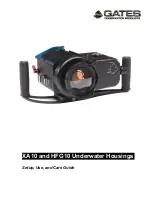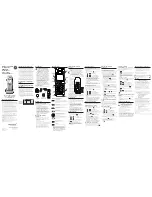
DO NOT OPERATE BEFORE READING THIS MANUAL!
KEEP IN SAFE PLACE--DO NOT DISCARD!
This manual was prepared as a “how-to-guide” for installers, end-users and maintenance personnel. It is also intended to educate both owner
(purchaser) and all individuals working around the unit, of potential hazards.
Conveyors contain many moving parts--pulleys, belting, chains, sprockets, shafts, rollers, etc. Therefore, it is imperative to become familiar with
basic unit operation and know all points of potential hazards.
This manual must be read by all new users before operating or working near this unit.
CAUTIONS, WARNINGS AND HAZARDS
NEVER connect belt conveyors directly to gravity conveyors, machinery
or fixtures without using connector brackets & pop out roller.
ALWAyS anchor permanent supports to floor (or mounting
surface). Use 3/8” x 2-1/2” (or longer) wedge anchors for
permanent installation in concrete flooring.
It is the responsibility of the customer and installation personnel to
supply and install net or mesh guarding on overhead mounted
conveyors to prevent product and/or debris from falling to floor in
areas where required.
If belt conveyor pulleys are adjusted during installation or
maintenance, nip point guard (at drive end on end drive unit) must
be readjusted. Nip point guard (take-up end) is automatically
adjusted when take-up pulley is adjusted. Nip point guards at both
ends of conveyor (center drive) must be readjusted. Center drive
guards MUST be replaced after installation or maintenance.
Before unit is ready for operation, snub roller guard (cover) must be
adjusted to ensure safe unit operation.
Belt lacing must be kept in good condition for safe work
environment.
To check drive sprocket alignment, shut “OFF” and lock out power
source before attempting any adjustments.
Electrical controls must be designed by a qualified electrical
engineer to ensure that appropriate safety features (emergency
stops, pull cords, switches, etc.) are installed on unit for safe
operation. Before conveyor start-up, all operators and other
personnel coming in contact with unit must be properly trained and
must have read accompanying Tech Handbook.
Upon start-up, if belt tracks to one side, turn unit “OFF”, lock
out power source and confirm that conveyor is square and that
all prime tracking components are square with bed. Belt tracking
adjustments should be performed by trained personnel ONLy. Read
section on “Belt Tracking” completely before attempting belt tracking
adjustments.
Only trained personnel shall perform maintenance functions. Before
maintenance operations are performed, shut conveyor “OFF” and
lock out power source to prevent unauthorized start-up. When
maintenance is completed, only authorized personnel shall be permitted to
start conveyor following maintenance or other emergency shut-off.
Do not operate conveyor with protective guards removed. This
includes chain guards, belt guards, snub roller guards, center drive
guards and any other safety guard.
Do not walk, ride, climb, or touch moving parts on a conveyor in
operation.
Do not wear loose clothing or uncovered hair around conveyor.
Do not work near conveyor without knowing how & where to shut
power “OFF” and lock out power source.
Do not remove jammed product with conveyor running.
Do not replace parts or perform
maintenance on conveyor, or moving conveyor parts, without first
shutting “OFF” power to conveyor and locking out power source.
Do not connect gravity to powered conveyor without safety gravity
connector brackets.
To prevent electrical shock, conveyor must be grounded, and have
proper electrical connections in accordance with federal, state, and
local codes.
Safety pop out rollers in conveyors installed above 7’-0” elevation
must be retained by guard rail, clips, etc. Safety pop out rollers must
be allowed to pop out when conveyors are installed at or below
7’-0” elevation.
It is the responsibility of conveyor end-user to comply with all safety
standards including OSHA and other federal, state, and local codes
or regulations. Install protective guarding and other related safety
precautionary equipment to eliminate hazardous operating condi-
tions
which may exist when two or more vendors supply
machinery for
related use.
Any violation of above safety instructions hereby removes all product
liability claims from Roach Manufacturing Corporation®.
Warning: All personnel coming in contact with this conveyor should be
aware of the following safety guidelines BEFORE USING OR WORKING
AROUND CONVEYOR. Note: always notify Roach Manufacturing®
whenever any conveyor is used in an application or condition other
than was originally intended. Failure to notify Roach® may allow
conveyor to be operated in a hazardous operating condition. Injuries
resulting from negligence or violation of safety instructions hereby
removes responsibility of product liability claims from Roach®.
IMPORTANT SAFETY GUIDELINES
Summary of Contents for 450BOS
Page 1: ...Installing and Maintaining Your Roach Conveyor...
Page 17: ...MODEL 725TB END DRIVE END side mount DRIVE center drive drawings 17...
Page 26: ...MODEL 796RB END DRIVE END side mount DRIVE center drive drawings 26...
Page 29: ...MODEL 751RB END DRIVE END side mount DRIVE center drive drawings 29...




































